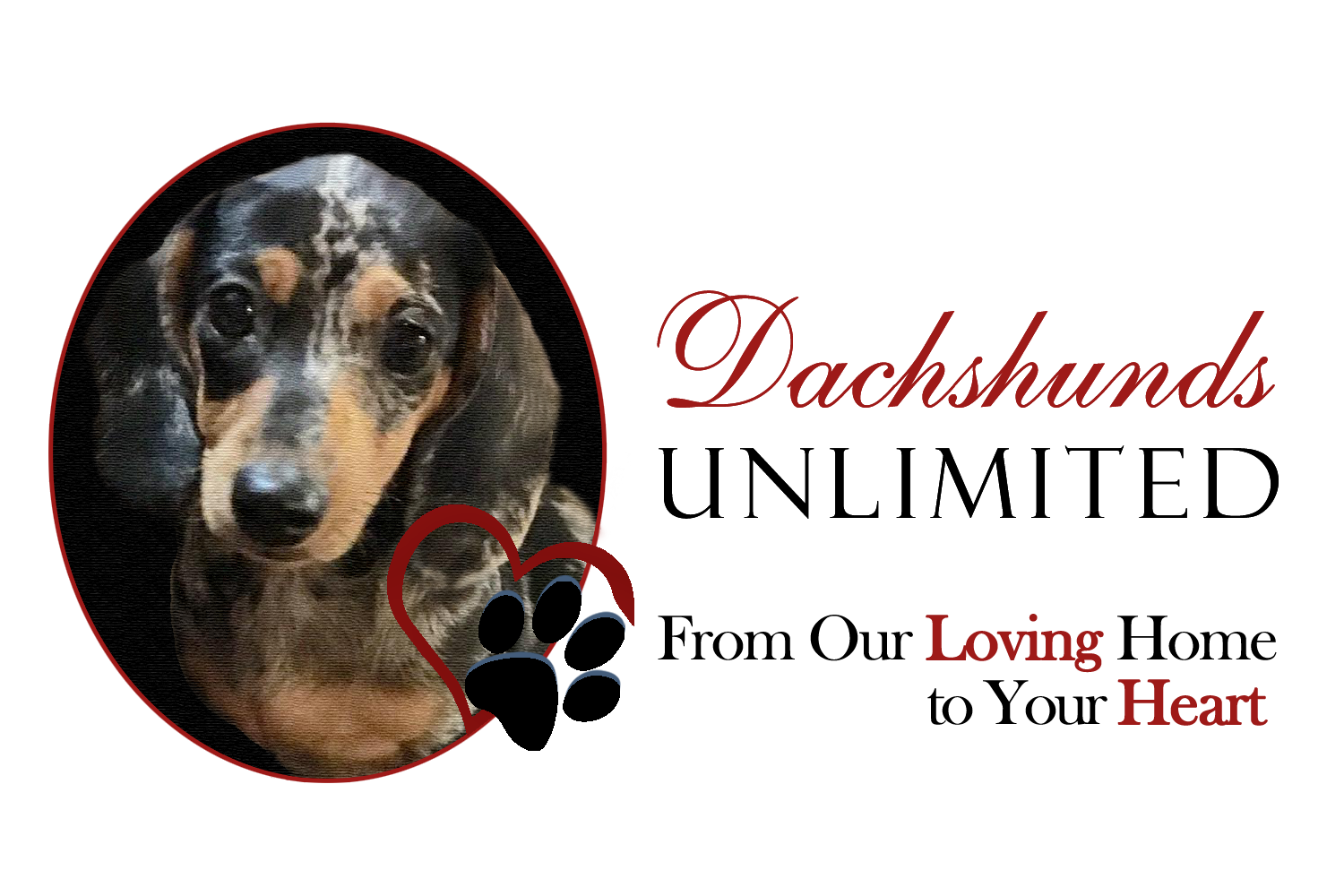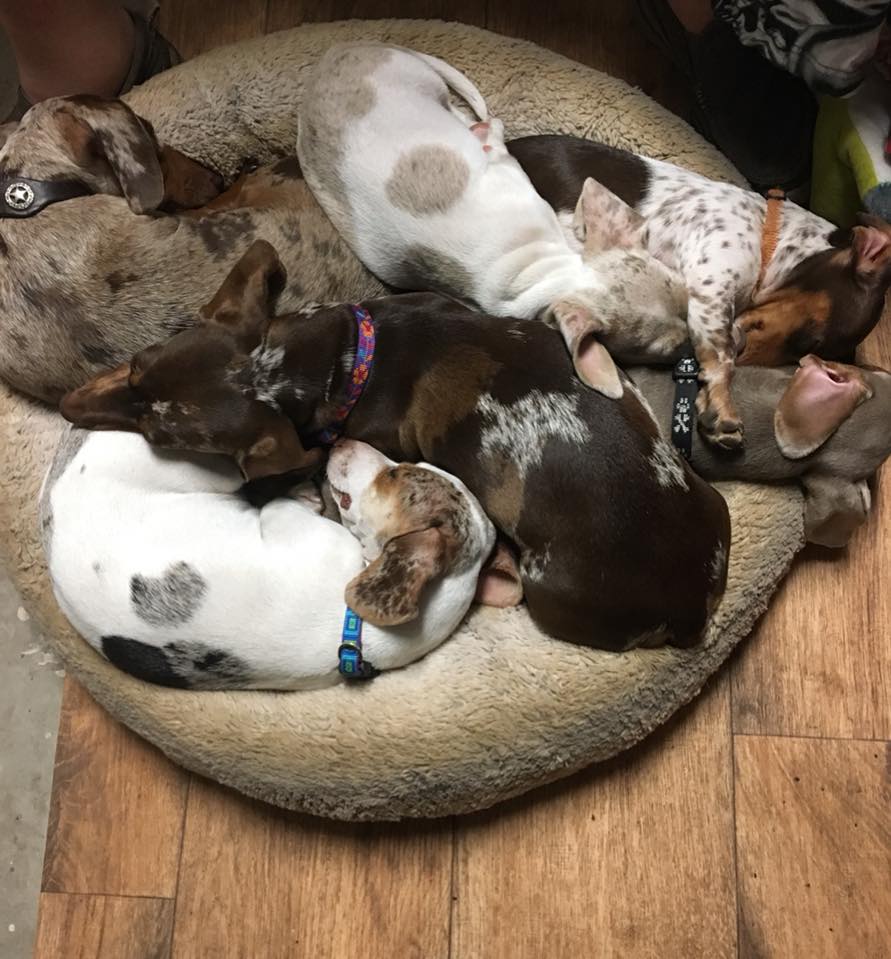Dachshund Markings
Naptime at Dachshunds Unlimited
Beauty by Design
The markings or patterns of a Dachshund’s coat may be either solid or a subtle design of markings that is overlaid atop the self color. Marking patterns may include Dapple, Double Dapple, Piebald, Sable, Brindle, and Boar (wirehaired only). In addition, any markings pattern may be superimposed over any self color.
To describe a Dachshund with one of these designs, simply list the coat’s self color (i.e., base color) followed by the markings designation (e.g., Dapple, Double Dapple, Piebald, Sable, or Brindle). For example, a Dachshund’s coat with a self color of black and tan that is with silver-colored dappled markings should be referred to as a black and tan dapple as opposed to a silver dapple.
Dapple and Double Dapple
Dachshund Unlimited's AKC Bailey
The dapple pattern may be described as a subtle wash of a lighter accent color over the coat’s predominant self color. If the dapple pattern is present on the face as well as the body, one or both of the Dachshund’s eyes may have either speckles of blue or be completely blue. One parent must have the dapple pattern to produce dapple puppies.
Double Dapples may only be produced when both parents are Dapples. The puppies’ coats may have large patches of white as well as dappled accents intermingled with the self color, and their eyes may be entirely blue. However, the breeding of two Dapples should only be attempted by experienced, professional breeders because Double Dapples may be born with extreme health complications including deafness, blindness, and other heartbreaking birth defects.
Piebald
Dachshund Unlimited's AKC Tiffany
The piebald pattern may be described as the covering of large patches of the coat’s self color with distinct white swashes. To breed a Piebald, at least one parent must carry the piebald gene.
Ironically, the swashes of white may be so predominant in the piebald markings pattern that the true self color of the Dachshund's coat may seem more like the accent color in the coat’s overall design pattern. For example, black and tan piebalds are often mistakenly referred to as “tricolors.”
Sable
The sable markings pattern is often difficult to recognize because it may be difficult to discern the subtleties of the markings at first glance. Each individual hair on the sable Dachshund’s coat—with the exceptions of the fur on the face and paws—is banded with two distinct colors. The part of the banded hair that is closest to the body will be the coat’s predominant self color; whereas, the tip of each banded hair will be lighter in color. The fur on the Dachshund’s face and paws will be the same as the self color. The sable markings pattern is unusual and seen only in longhair Dachshunds.
Brindle
The brindle markings pattern is best described as a subtle striping of black bands over the coat’s self color. Although the black stripes are present all over the body, if the predominant shade in the self color is dark (e.g., black and tan), the black stripes may only be visible in the lighter-colored point areas (e.g., paws, beneath the jaw). At least one parent must have the brindle gene to produce brindle puppies.





